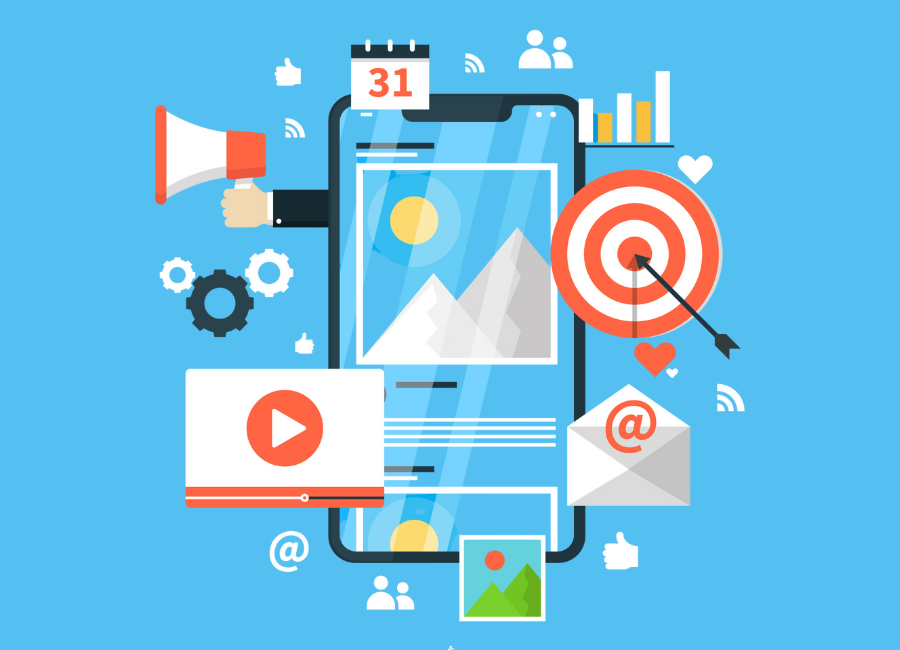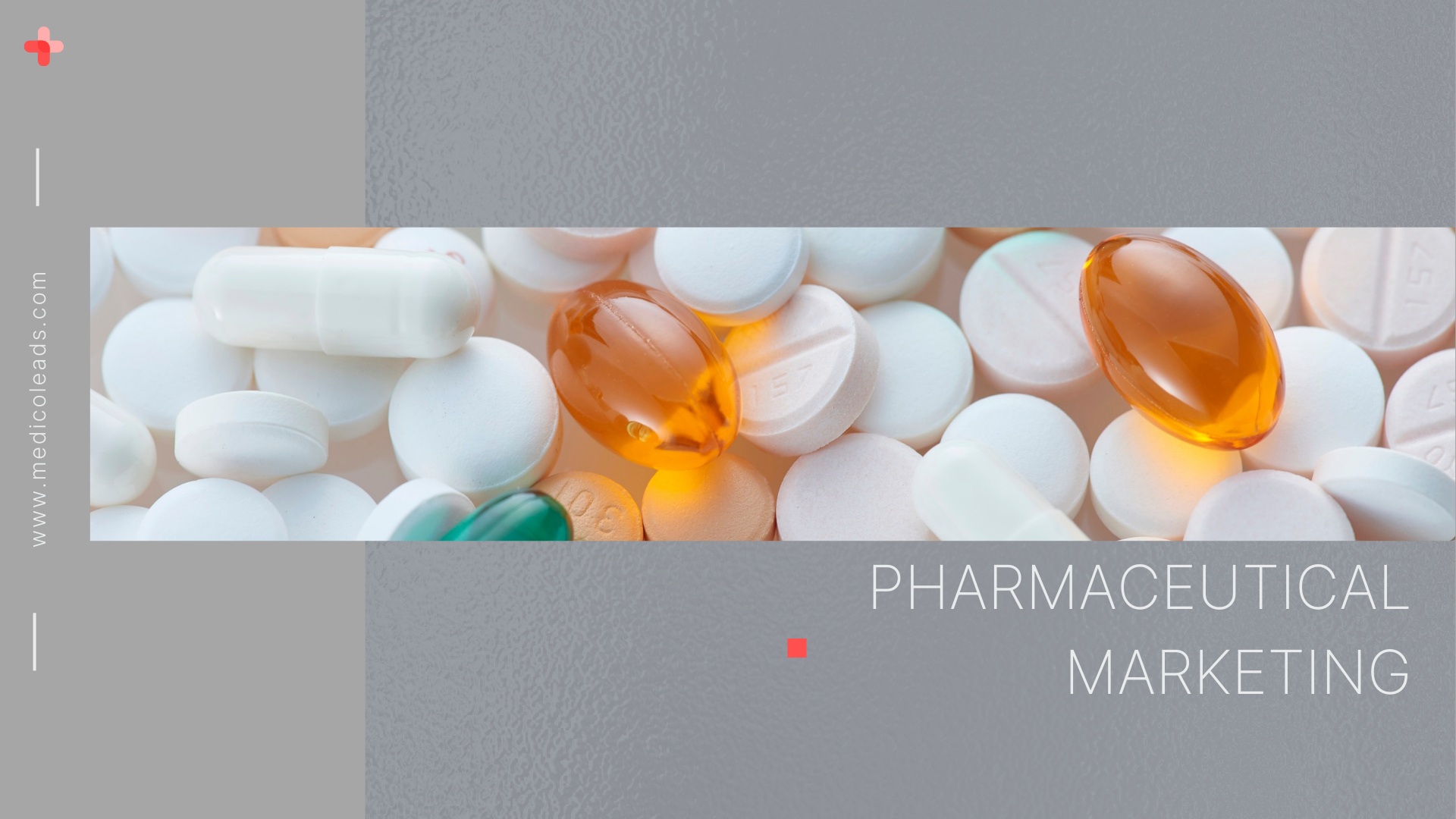Multi-channel marketing in pharma uses multiple platforms (digital, print, social) to engage patients, doctors, and stakeholders, improving brand awareness and customer experience.

TABLE OF CONTENTS
In the competitive B2B pharmaceutical space, connecting with the right decision-makers is everything. Multi-channel marketing lets you reach doctors, hospital executives, and procurement teams across multiple touchpoints for maximum impact.
- Targeted Outreach: Engage the right stakeholders on the channels they use most.
- Better Engagement: Combine email, social, webinars, and events for meaningful interactions.
- Measurable ROI: Track performance across channels to optimize campaigns and boost results.
With the right strategy, multi-channel marketing turns fragmented efforts into a cohesive approach that drives growth and builds lasting industry relationships.
Whether you’re a seasoned marketer or new to the pharma industry, this guide will break down how multi-channel strategies can skyrocket your brand visibility and engagement. Let’s dive in and explore the tools, tactics, and trends that’ll keep your pharma marketing on top this year!
1. What is Multi-Channel Marketing?
Multi-channel marketing is a strategy where pharmaceutical businesses engage healthcare professionals and decision-makers across multiple platforms—email, social media, webinars, websites, and industry events—offering them choice and convenience.
The goal is to let your audience interact with your brand on their terms, whether it’s exploring clinical data online, attending a virtual seminar, or connecting at an industry conference.
Yet, when channels operate in isolation, it can create inconsistent experiences and dilute messaging, highlighting the need for a coordinated, data-driven approach to truly maximize impact.
2. How to Create a Multi-Channel Marketing Pharma Strategy

To build an effective B2B multi-channel marketing strategy in the pharmaceutical industry, start by defining your target audience—physicians, hospital executives, payers, or other decision-makers—and understanding their specific needs.
Then, choose the right mix of online and offline channels, such as email campaigns, webinars, industry conferences, and in-pharmacy promotions, ensuring messaging is consistent, compliant, and tailored to each platform.
Finally, leverage data and analytics to track performance, integrate channels for a seamless engagement journey, and continuously refine your approach to stay aligned with evolving market dynamics.
2.1. Step 1: Define Your Target Audience
Understanding your audience is crucial for a successful pharma strategy. Segment doctors, and healthcare providers, then use data analytics to tailor your approach. This drives better engagement across all channels.
2.2. Step 2: Select the Best Marketing Channels
Select the optimal combination of digital and traditional channels for your pharmaceutical companies. This could include social media, email, paid ads, medical conferences, and content marketing. Make sure each channel supports your overall strategy and delivers measurable results.
2.3. Step 3: Create Consistent Messaging Across Channels
Consistency is crucial in multi-channel pharma marketing. Keep your messaging aligned with your brand’s voice across all platforms. Whether it’s social media ads for patients or email newsletters for doctors, make sure your content is clear, relevant, and tailored to each audience.
2.4. Step 4: Leverage Data Analytics for Optimization
Use data analytics to track your multi-channel campaigns. Metrics like engagement rates, CTR, and ROI help you fine-tune your strategy and improve results. Data-driven insights make decision-making smarter and campaigns more effective.
2.5. Step 5: Automate Processes for Efficiency and Scale
AI tools and automation can boost efficiency and save time. Use AI to automate emails, social media posts, and patient engagement. This ensures timely, relevant content delivery, helping you scale your pharma marketing efforts.
2.6. Step 6: Optimize for Mobile and Local Search
In 2025, more healthcare professionals are engaging with pharma brands on mobile. Optimize your multi-channel strategy for mobile devices to ensure a smooth experience. Also, use local SEO to target healthcare providers and patients in specific regions, boosting visibility and engagement.
2.7. Step 7: Continuously Evaluate and Refine Your Strategy
Successful multi-channel marketing in the pharmaceutical industry requires constant analysis and optimization. Utilize AI tools to regularly assess your strategy and make adjustments based on real-time data. Fine-tuning your campaigns ensures maximum impact and keeps you relevant in a changing digital landscape.
3. Benefits of a Multi-Channel Marketing Pharma Strategy
A B2B pharma multi-channel strategy amplifies reach, engagement, and brand loyalty by connecting with healthcare professionals and key stakeholders across digital and traditional platforms. By focusing on the audience, it delivers personalized communication, generates actionable data for campaign optimization, and improves ROI through tailored messaging.
This approach also ensures consistency and compliance, helping pharma marketers navigate the complex regulatory landscape while building trust and long-term relationships.
3.1. Enhanced Audience Reach
With multi-channel marketing, you can expand your reach across platforms—social media, email, print, and medical conferences. This helps engage a broader audience, from patients to doctors.
Using a healthcare database providers allows you to target healthcare professionals directly, ensuring your messages reach the right people at the right time.
Ready to elevate your pharma marketing strategy?
Explore how AI-driven tools and data analytics can transform your campaigns.
Learn More Here!3.2. Improved Customer Engagement
Reaching your target audience through various touchpoints allows for more meaningful interactions. Whether through personalized emails, social media conversations, or in-person conferences, multi-channel strategies enable continuous and deeper engagement with healthcare professionals and patients alike.
3.3. Consistent Brand Messaging
A unified approach across channels ensures consistent messaging. Whether a patient sees your ad on Instagram or a doctor reads your article in a medical journal, a consistent message builds trust and reinforces brand recognition, enhancing the overall effectiveness of your campaigns.
3.4. Better Data Collection and Insights
Multi-channel marketing allows pharma brands to gather valuable data from different sources, giving insights into customer behavior, preferences, and trends. These insights help marketers optimize campaigns in real-time, fine-tuning strategies based on actual performance data.
3.5. Increased ROI
By leveraging multiple channels, pharma companies can diversify their marketing efforts, optimizing each for better results. With a more targeted approach, your marketing spend becomes more efficient, leading to higher return on investment (ROI) from each campaign.
3.6. Flexibility and Adaptability
The pharmaceutical industry is constantly evolving, and multi-channel marketing gives you the flexibility to adjust your strategy quickly. Whether it’s shifting focus to digital platforms due to changing regulations or introducing new healthcare solutions, multi-channel marketing ensures you’re adaptable and ready for change.
3.7. Seamless Customer Journey
In today’s competitive pharmaceutical market, patients and healthcare professionals expect a seamless experience across all channels. Multi-channel marketing allows you to guide your audience through a smooth journey, from discovering your product to making informed decisions, ensuring they have a positive experience at every touchpoint.
3.8. Boosted Trust and Credibility
When patients or healthcare professionals encounter consistent, well-coordinated messaging across multiple channels, it fosters a sense of credibility and trust. A well-executed multi-channel strategy enhances your brand’s reputation and positions your company as a leader in the industry.
By incorporating a multi-channel strategy, pharmaceutical brands can improve their visibility, foster stronger connections with healthcare professionals and prospects, and ultimately drive greater success in an increasingly digital and dynamic marketplace.
4. Best Practices for Multi-Channel Marketing in Pharma
To effectively reach your audience, pharma brands need to implement key strategies that ensure consistency, collaboration, and continuous improvement across all marketing channels. Here’s how to get it right.
4.1. Creating a Unified Customer Journey
To keep your messaging consistent, make sure your brand voice stays the same across all platforms. Map the customer journey, from awareness to treatment, so patients and healthcare professionals feel supported at every step.
4.2. Aligning Sales and Marketing Teams
It’s all about teamwork. Marketing, sales, and medical teams should collaborate to boost sales and build solid relationships with healthcare professionals (HCPs). A unified approach ensures that your pharma marketing resonates effectively across all channels.
4.3. Measuring Effectiveness and Refining Strategies
Review campaign data regularly to see what’s working. Use A/B testing and optimize content for better engagement. Continuous tweaks ensure your multi-channel marketing stays relevant and effective, improving results over time.
5. Key Challenges in Pharma Marketing
Pharma marketing presents several key challenges that require careful attention:
5.1. Privacy and Data Security
Protecting patient data is critical. Compliance with regulations like HIPAA is mandatory to ensure privacy and secure handling of sensitive information.
5.2. Navigating Regulatory Constraints
Pharma brands must adhere to strict industry regulations when promoting products, ensuring all marketing materials are compliant with legal standards and ethical practices.
5.3. Adapting to a Complex Consumer Journey
The path to decision-making is more complex than ever. Patients and healthcare professionals engage across multiple channels, requiring a unified and personalized experience at every touchpoint.
6. Future Trends in Multi-Channel Marketing for the Pharmaceutical Industry
The future of pharmaceutical multi-channel marketing is moving toward a fully integrated omnichannel approach, powered by AI, machine learning, and advanced data analytics to deliver highly personalized engagement with healthcare professionals and patients.
Key trends include leveraging virtual and digital platforms for greater accessibility, creating seamless and consistent customer experiences, prioritizing data privacy and regulatory compliance, and exploring blockchain for enhanced security and trust.
The ultimate aim is to deliver data-driven, personalized communications across all channels, boosting patient access, brand credibility, and product adoption.
Conclusion
Multi-channel marketing is crucial for pharma’s future success. It boosts engagement, improves patient outcomes, and enhances brand visibility. By using digital and traditional channels effectively, pharma brands can reach the right audience at the right time.
To succeed, pharmaceutical marketers should focus on personalization, optimize content for mobile devices, and ensure regulatory compliance. Regularly analyze data and collaborate across teams to keep your strategy sharp and effective, driving long-term results.
Are you prepared to take your multi-channel marketing to the next level?
Start optimizing your strategy today for better patient engagement and brand growth. Contact Us Now.
FAQ
Why is multi-channel marketing important in pharma?
It enhances reach, engagement, and personalized communication with healthcare professionals (HCPs) and patients, driving better outcomes.
What channels are used in pharmaceutical marketing?
Key channels include websites, social media, email campaigns, conferences, TV ads, and print media to target various audiences.
What is omnichannel vs. multi-channel marketing in pharma?
Multi-channel uses several platforms independently, while omnichannel integrates them for a seamless customer journey.
How do pharma companies ensure compliance in digital marketing?
By adhering to FDA guidelines and creating content approved for medical accuracy, ensuring legal and ethical standards are met.
What are the best practices for email marketing in pharma?
Personalizing emails based on patient needs, adhering to compliance standards, and providing valuable health-related content.
What are the future trends in pharmaceutical marketing?
Future trends include AI-powered marketing, voice search, IoT integration, and a stronger focus on patient-centric strategies.
Contact Us

